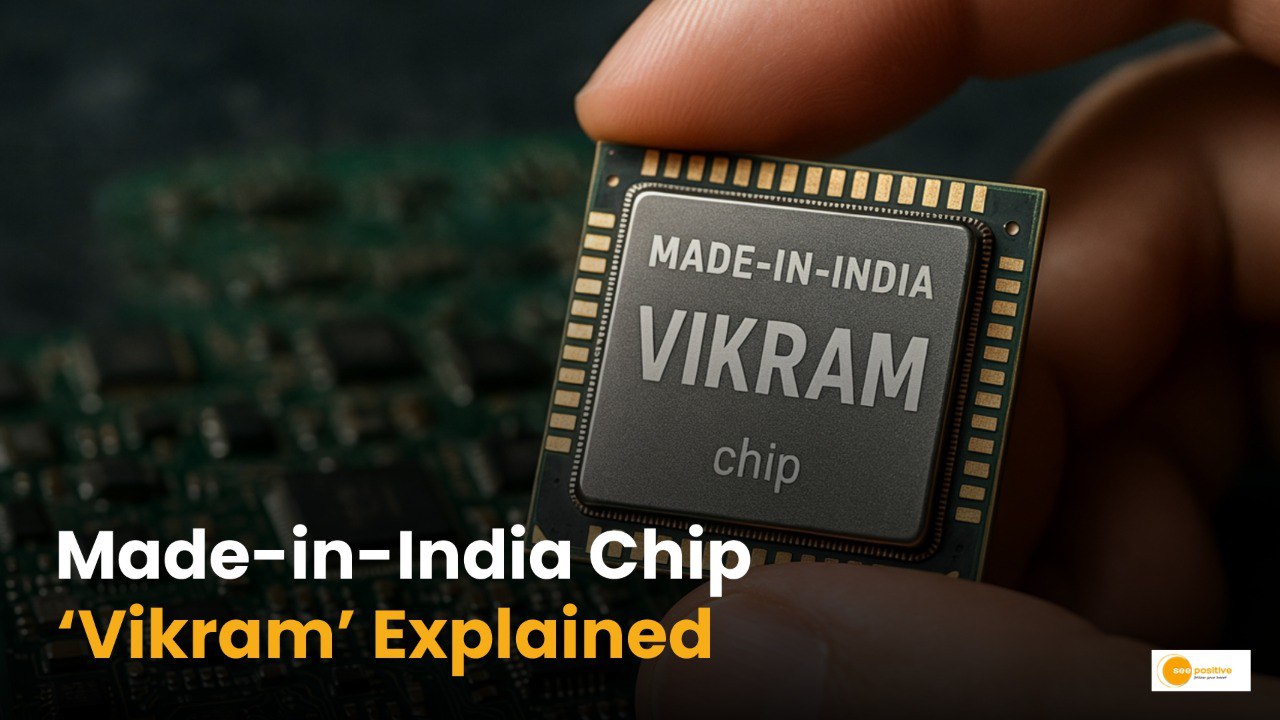India unveiled its first fully indigenous 32‑bit semiconductor chip, Vikram. At the prestigious Semicon India 2025 event, Union Minister Ashwini Vaishnaw presented India’s first fully indigenous semiconductor chip, named “Vikram”, to Prime Minister Narendra Modi. This chip, developed by the Semiconductor Laboratory (SCL) under ISRO, is a 32-bit processor designed for high-reliability uses such as space missions, defense systems, automotive technology, and industrial applications.
But what does all this mean for everyday Indians? Why is this such a big deal?
Let’s break it down.
What is a Semiconductor Chip, and Why is it Important?
A semiconductor chip, or microchip, is the “brain” behind all modern electronics. From smartphones, laptops, and cars to missiles, satellites, and power grids, chips power nearly every digital device around us.
Until now, India heavily relied on imported chips—mostly from countries like Taiwan, China, and the USA. This dependency made India vulnerable to global chip shortages, high costs, and geopolitical uncertainties.
The Vikram Chip: India’s First Step Toward Chip Independence
The Vikram chip is a 32-bit processor that meets the strict reliability requirements of space and defense technology. Developed completely within India, it shows that we now have the technical know-how and infrastructure to make advanced chips for critical use cases.
Named after Dr. Vikram Sarabhai, the father of India’s space program, this chip reflects both technological progress and national pride.
Why This Matters for India’s Future
Here’s how India stands to benefit from developing its own semiconductor chips:
1. Tech Independence
India can now begin to reduce dependence on foreign chipmakers. This is a strategic move in a world where chips are as vital as oil.
2. Boost to ‘Make in India’
The Vikram chip is a strong push for the ‘Make in India’ and ‘Atmanirbhar Bharat’ (self-reliant India) initiatives. It encourages domestic production of high-tech components.
3. Stronger National Security
For defense and space applications, having in-house chip capabilities is critical. No more risks of backdoors or foreign surveillance through imported components.
4. Job Creation and Skilling
The semiconductor industry will open up thousands of high-tech jobs in design, testing, fabrication, and research, boosting employment and skill development.
5. Economic Growth
India aims to become a global semiconductor hub, attracting investment, startups, and multinational corporations. This will help boost GDP and reduce the trade deficit.
A Giant Leap for India’s Digital Future
The launch of India’s first homegrown semiconductor chip is not just a technological achievement—it’s a turning point. It marks the beginning of India’s journey toward becoming a global powerhouse in electronics and semiconductors.
For the average citizen, it means faster, more secure, and affordable tech products in the future, more job opportunities, and national pride in our self-reliance.
India has taken its first confident step into the world of chip-making—and the world is watching.


